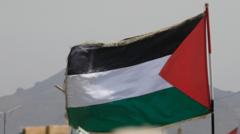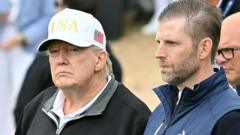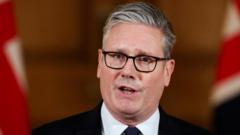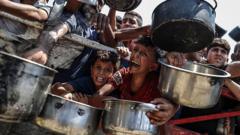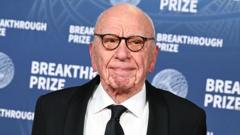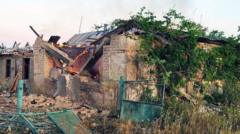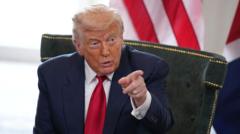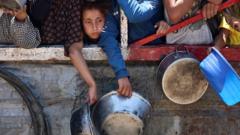Trump's recent actions blur the line between asserting domestic authority and maintaining international peace.
Trump's Military Maneuvers: A Study of Domestic Power and Foreign Reluctance

Trump's Military Maneuvers: A Study of Domestic Power and Foreign Reluctance
As President Trump showcases military might on home soil, his hesitance to engage abroad raises questions about his leadership style.
June 14, 2025
In a striking exhibition of domestic military power, President Trump prepares for a military parade in Washington, showcasing tanks on the streets for the first time in decades—a move pointedly criticized by military officials who likened it to dictatorial displays. Meanwhile, his administration has deployed troops to Los Angeles to manage fierce immigration protestors, seeming to indulge in an atmosphere of escalating rhetoric and threats against dissenters.
Simultaneously, Trump’s foreign policy has taken a rather subdued approach amid escalating tensions in the Middle East. Despite verbal affirmations of unwavering support for Israel against Iran, he has conspicuously selected a passive stance in military engagement, avoiding direct conflict while advocating for negotiations. This juxtaposition—aggressive showmanship at home yet diplomatic reticence abroad—illustrates his intricate and often contradictory relationship with military discourse.
Despite lacking personal military service, Trump has utilized the armed forces as a political tool throughout his presidency, often surrounding himself with loyal commanders while dismissing veterans who do not resonate with his ideology. His recent engagements at military academies have taken on campaign-like appearances, causing experts to question whether his leadership embodies authoritarian tendencies at home while shunning the responsibilities of traditional warfare abroad.
In revealing both strength and caution, the current President adds a complex chapter to America's ongoing dialogue on the utilization of military power, leaving citizens and historians alike to ponder the implications of his approach as the nation navigates its place on the global stage.
In a striking exhibition of domestic military power, President Trump prepares for a military parade in Washington, showcasing tanks on the streets for the first time in decades—a move pointedly criticized by military officials who likened it to dictatorial displays. Meanwhile, his administration has deployed troops to Los Angeles to manage fierce immigration protestors, seeming to indulge in an atmosphere of escalating rhetoric and threats against dissenters.
Simultaneously, Trump’s foreign policy has taken a rather subdued approach amid escalating tensions in the Middle East. Despite verbal affirmations of unwavering support for Israel against Iran, he has conspicuously selected a passive stance in military engagement, avoiding direct conflict while advocating for negotiations. This juxtaposition—aggressive showmanship at home yet diplomatic reticence abroad—illustrates his intricate and often contradictory relationship with military discourse.
Despite lacking personal military service, Trump has utilized the armed forces as a political tool throughout his presidency, often surrounding himself with loyal commanders while dismissing veterans who do not resonate with his ideology. His recent engagements at military academies have taken on campaign-like appearances, causing experts to question whether his leadership embodies authoritarian tendencies at home while shunning the responsibilities of traditional warfare abroad.
In revealing both strength and caution, the current President adds a complex chapter to America's ongoing dialogue on the utilization of military power, leaving citizens and historians alike to ponder the implications of his approach as the nation navigates its place on the global stage.

